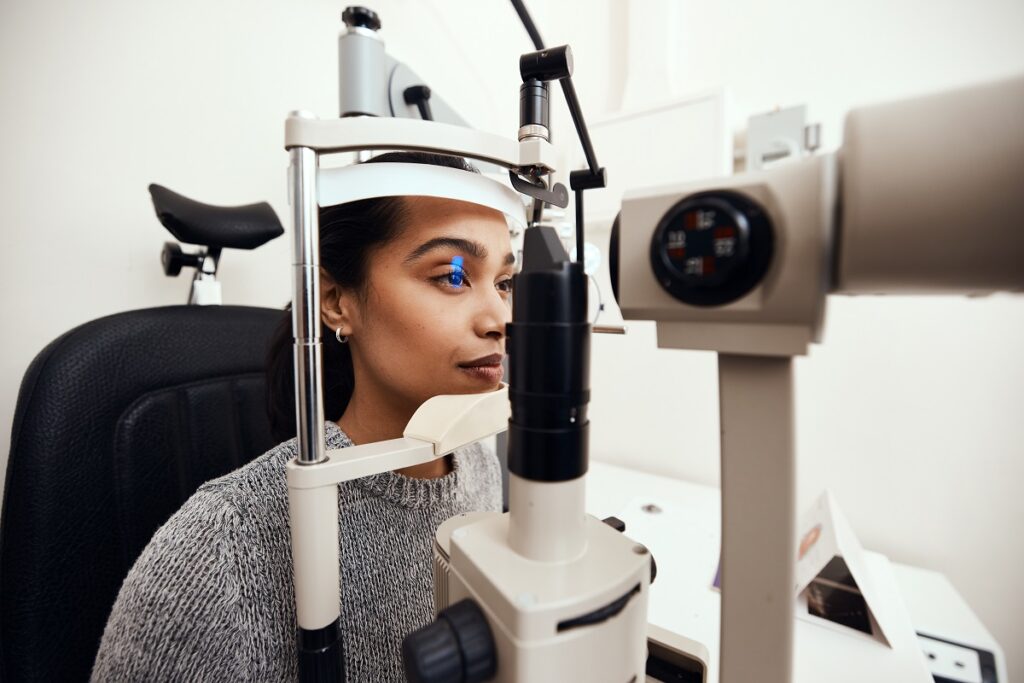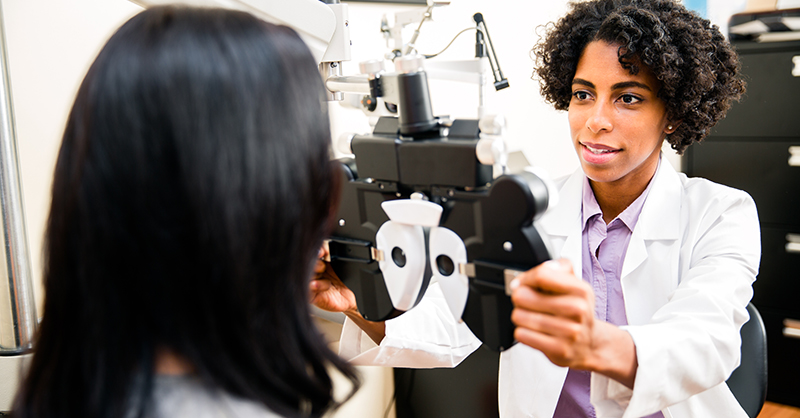Why Picking an Eye Doctor Optometrist is Vital for Your Eyes
Why Picking an Eye Doctor Optometrist is Vital for Your Eyes
Blog Article
Discovering the current Technological Advancements in Optometry and What They Mean for Optometrists
From the accuracy of Optical Comprehensibility Tomography to the nuanced understandings offered by AI-driven analysis devices, these advancements are setting new requirements in client evaluation and therapy. As these innovations permeate the method, eye doctors are encountered with the obstacle of embracing these devices to boost individual results.
Advancements in Diagnostic Tools
Progressing the area of optometry, technologies in analysis tools have actually changed the way eye treatment professionals examine and identify eye problems and aesthetic problems. The past decade has actually witnessed significant technical innovations, allowing more thorough and exact assessments.
An additional secret advancement is the introduction of sophisticated corneal topography systems, which map the surface curvature of the cornea with accuracy. These tools are specifically helpful for fitting contact lenses and detecting corneal problems. Moreover, electronic retinal imaging has changed typical ophthalmoscopy, supplying thorough, panoramic sights of the retina that help with thorough aesthetic assessments.
The development of wavefront aberrometry has actually also been important, making it possible for the evaluation of refractive errors with unequaled accuracy (Eye Doctor). This modern technology helps in personalizing corrective lenses and enhancing surgical end results for refractive surgeries. Jointly, these analysis innovations empower eye doctors to supply exceptional person treatment, guaranteeing very early intervention and customized therapy methods, ultimately improving aesthetic health and wellness end results
AI in Person Administration
Structure on the structure of sophisticated diagnostic devices, the incorporation of expert system (AI) in patient management stands for a transformative leap for optometry. AI systems are increasingly utilized to improve performance, accuracy, and personalization in person treatment. By examining huge quantities of information, AI can recognize patterns and forecast possible ocular problems, allowing eye doctors to customize treatments more properly. This capability is important in handling persistent eye diseases such as glaucoma and diabetic person retinopathy, where early detection and constant monitoring are vital.
Moreover, AI-driven systems facilitate streamlined patient communications and administrative procedures. Automated scheduling, virtual appointments, and individualized follow-up plans not only boost individual fulfillment however also maximize time management for experts. These systems can triage people based upon the necessity of their conditions, ensuring that those in vital demand receive punctual interest.
Moreover, AI improves decision-making by providing optometrists with evidence-based referrals and therapy paths. By incorporating data from electronic health records, AI tools use insights that inform scientific decisions, lowering the risk of mistakes and boosting individual end results. As AI remains to evolve, its role in client monitoring will likely broaden, reshaping the landscape of optometric treatment.
Advancements in Retinal Imaging
In the realm of optometry, retinal imaging has observed exceptional technical innovations that are improving analysis abilities and individual treatment. Developments such as Optical Comprehensibility Tomography (OCT) and fundus digital photography have transformed how optometrists picture and examine the retina. OCT, specifically, gives high-resolution, cross-sectional photos of the retina, allowing for the detailed examination of its layers. This capability is very useful for early detection and administration of problems like glaucoma, diabetic retinopathy, and age-related macular deterioration.
Boosted imaging techniques like OCT angiography are additional refining analysis accuracy. Eye Doctor Optometrist. Such improvements promote the identification of minute retinal changes that might symbolize disease progression.
Furthermore, developments in man-made intelligence are increasing retinal imaging by making it possible for automatic analysis of big datasets. These systems aid optometrists in recognizing patterns a sign of pathology, therefore improving diagnostic accuracy and effectiveness. Jointly, these advancements are changing retinal imaging right into a keystone of contemporary eye care, enhancing outcomes and expanding therapeutic possibilities.
Teleoptometry's Expanding Duty
Teleoptometry is significantly ending up being a crucial component of eye treatment, driven by advancements in electronic communication and diagnostic tools. This is particularly valuable in underserved and rural areas where access to specialized eye treatment is typically restricted.
The assimilation of expert system official website (AI) further improves teleoptometry, allowing the analysis of aesthetic information and assisting in the discovery of eye problems such as glaucoma and diabetic retinopathy. AI-powered formulas can rapidly analyze intricate imaging information, giving optometrists with valuable insights that strengthen scientific decision-making.
In addition, teleoptometry sustains continuity of care through smooth assimilation with electronic health and wellness documents (EHRs), permitting eye doctors to keep comprehensive patient backgrounds. When seeking advice from with various specialists., this guarantees that individuals receive consistent and individualized treatment even.
Despite these benefits, obstacles stay, including making certain data protection and taking care of individual expectations. However, teleoptometry represents a considerable stride in the direction of more accessible, reliable, and patient-centered eye treatment. As modern technology progresses, its article source duty is positioned to increase additionally.

Future Fads in Eye Care
A myriad of ingenious patterns is readied to improve the future of eye treatment, driven by technical improvements and the advancing demands of individuals. One substantial fad is the integration of artificial intelligence (AI) in diagnostics, which assures to boost the accuracy and performance of eye assessments. AI algorithms can evaluate substantial quantities of information from retinal images, possibly finding conditions like diabetic person retinopathy and glaucoma earlier than typical methods.
Moreover, customized medicine is getting grip in optometry, with genetic screening educating tailored treatment strategies. This method aims to enhance patient results by tailoring interventions to specific genetic profiles. Wearable innovation, such as smart get in touch with lenses, is likewise coming up, providing real-time monitoring of intraocular pressure or sugar levels, hence supplying constant insights right into ocular and systemic health and wellness.
The adoption of enhanced fact (AR) and online reality (VIRTUAL REALITY) in training and client education is another emerging fad. These technologies offer immersive experiences that can improve understanding and abilities both for eye doctors and patients. As these patterns develop, optometrists have to stay abreast of technological innovations to provide advanced treatment, ensuring improved client end results and satisfaction in the vibrant landscape of eye treatment.
Verdict

Collectively, these diagnostic improvements empower optometrists to deliver premium patient care, making certain early intervention and tailored therapy strategies, eventually boosting aesthetic health and wellness end results.

As these modern technologies continue to evolve, optometrists have to adjust and integrate them into practice, inevitably optimizing process effectiveness and elevating the standard of eye care delivered to people.
Report this page